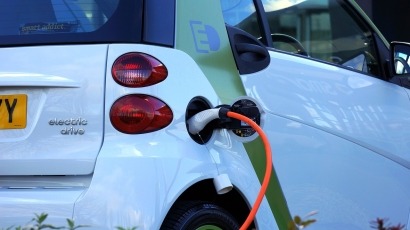
Beyond CO2 emissions, some grids are already at capacity, and the increased load of an electric transport sector risks blackouts and power supply issues. South Africa is an EV market with both of these issues, and several innovations have been made using distributed power generation to tackle these challenges.
IDTechEx’s research report, “Off-Grid Charging For Electric Vehicles 2024-2034: Technologies, Benchmarking, Players and Forecasts”, explores the challenges and solutions associated with charging EVs in the context of constrained electricity grids.
One possible solution being trialed in South Africa, among other places, is harnessing distributed renewable microgrids to form the backbone of charging networks. By integrating a solar farm, large-scale energy storage (ES), and high-powered charging outlets, Vrendal-based Zero Carbon Charge plans to build an etruck charging network.
Not only does this decouple charging from an unreliable grid, it also avoids placing excess electrical demand on utilities, avoids the need for costly grid expansions, and provides free and 100% renewable energy for the trucks to operate on. This is not limited to South Africa; the US, in particular, has also seen a boom in companies offering grid-free solar-powered charging. In the US, many of the products are smaller scale and transportable, allowing easy setup for EV users who want quick access to EV charging.
The main challenge with distributed solar generation for EV charging is the low power output of photovoltaic panels. Most produce around 250 Watts per square meter, which is relatively low. The other challenge is storing energy, as charging will not always be required constantly, so an on-site battery is required to store the generated electricity. Without an integrated on-site battery, charging is impossible when there is no sunlight, such as inclement weather or overnight. On-site battery storage can combat this intermittency.
Larger solar farms with integrated energy storage can become islanded microgrids, and with enough on-site storage and photovoltaic production, potential grid-independent fast charging is possible. This is the approach proposed for the South African etruck charging network. It is important to note that purely solar solutions are likely to be geographically restricted to areas with high photovoltaic potential. Thus, it is no surprise that the leading regions are Western regions of the US and places like South Africa.
Beam Global, a supplier of EV canopy chargers, recently announced its first sales in the European market to the United Kingdom Ministry of Defense. However, the chargers will not be deployed in the mainland of the UK; they will be deployed on a military base in Cyprus, one of the sunniest regions on the continent.
Despite technical challenges, the aging and fossil fuel-heavy nature of grids combined with high EV uptake call for new charging solutions, and IDTechEx predicts that solar charging systems will make up a sizeable portion of the overall $16 billion off-grid charging infrastructure hardware market by 2034.
IDTechEx research also indicates several other technologies likely to be adopted for off-grid EV charging. Hydrogen fuel cell charging is likely to emerge as a key solution for use cases requiring much greater power per area, with a particular expected focus on electrified construction sites. More niche technologies include AWE (airborne wind energy), which harnesses high altitude winds for distributed power generation.

